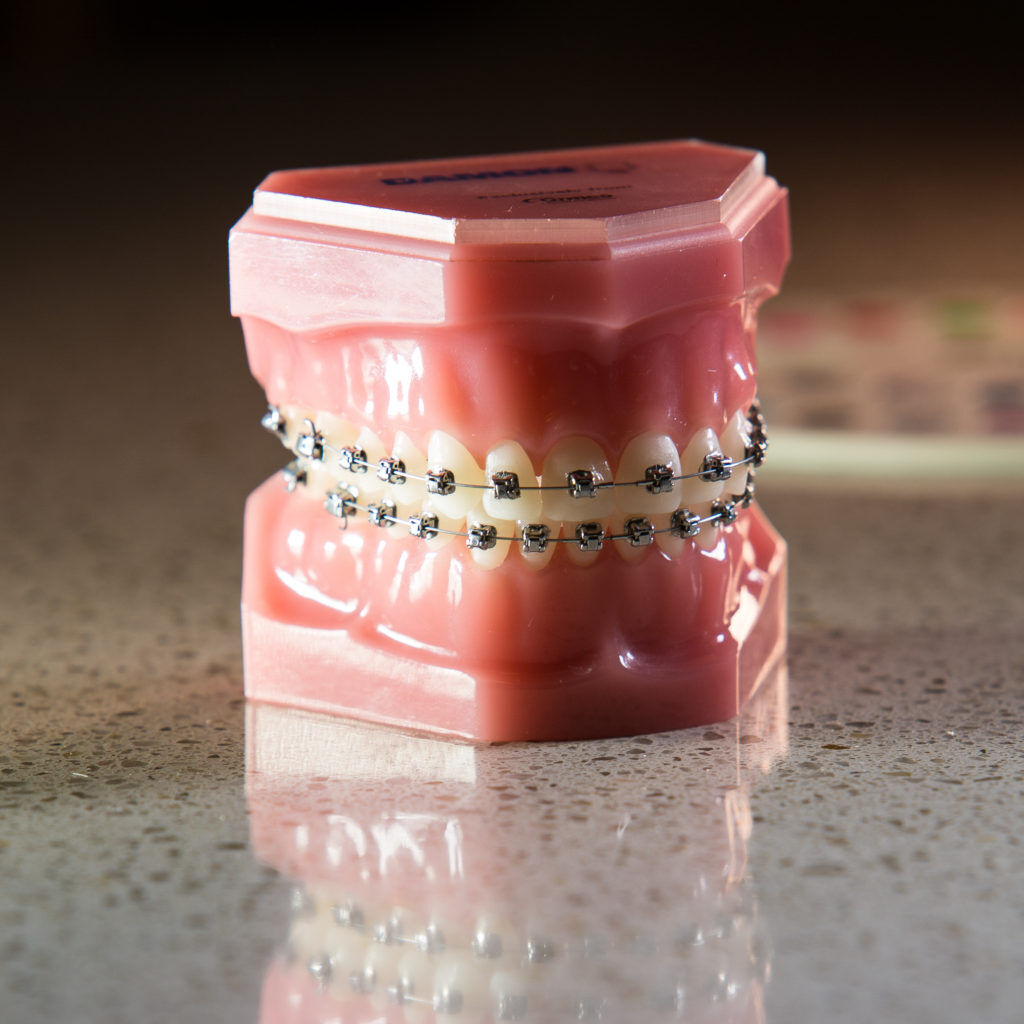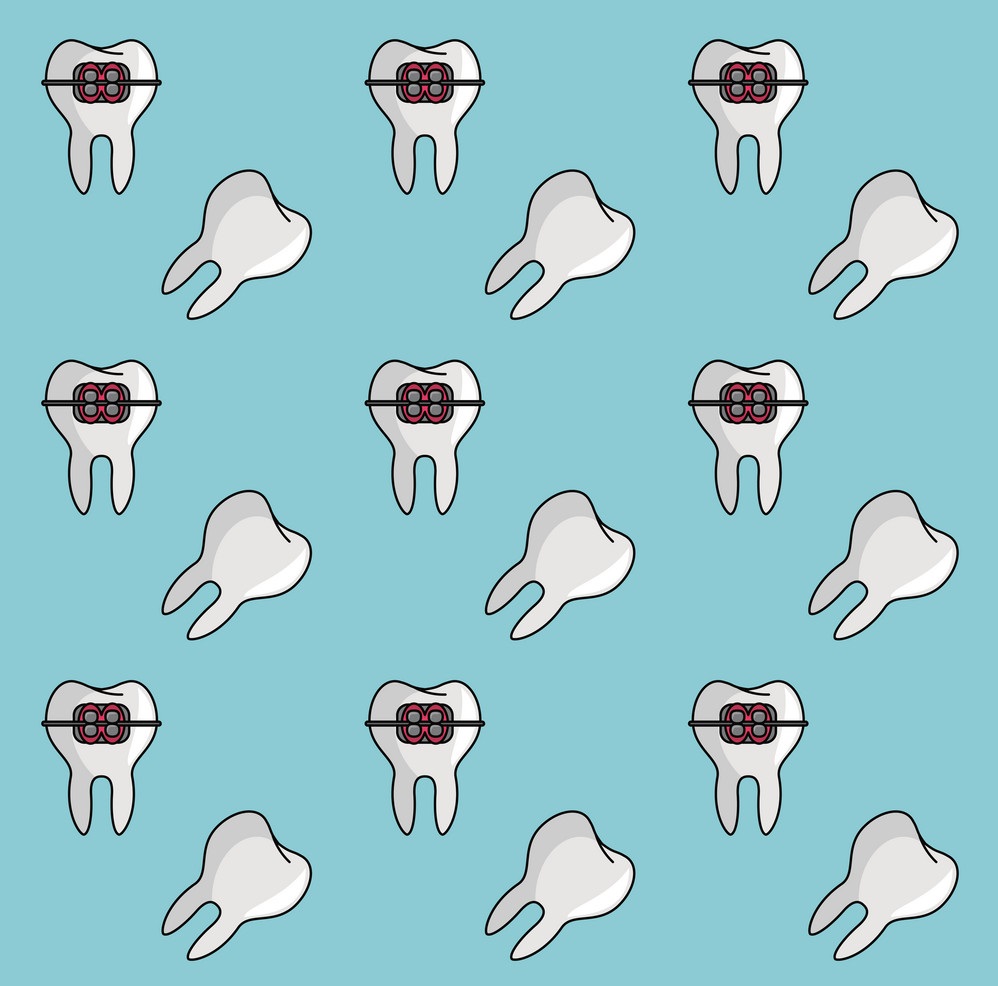Orthodontic (Braces) Treatment
Orthodontic as the origin and meaning of the word; is a Latin word. And it means ‘’Smooth teeth’’ . Deformation of the jaw structures of children and adults and as a result of this self-indicating disorders such as teeth alignment and shape disorders are the field of study of Orthodontics. People who are trained and specialized in dentistry and who work for diagnosing, treating and preventing these disorders are called ‘’Orthodontists’’.
Orthodontists fix disorders in the jaw and teeth occurred for various reasons, with the help of various tools specially designed for orthodontic treatment. An aesthetic face suitable for the patient, a healthy chewing and to achieve tooth and jaw unison, which is also physiologically necessary for speech and, as a result of all this, giving away an impressive smile are among the main goals of orthodontists.


Causes of Orthodontic Problems
Disorders of oral, jaw and dental structure; the lower jaw being forward, the jaws being either irregular or even, lack of teeth or distorted structure, locking or contracting of the jaw, weakness in jaw bones which occur related to hereditary pathways in general can cause orthodontic problems. However, in order to apply the treatment, the condition of hereditary status is of course not looked for. Such disorders can also take place as a result of; subsequent traumas, physical impacts or accidents. However, other than such problems, structure disorders usually carried by hereditary path mostly begins to indicate itself in childhood or adolescence periods. Bone development of children between the ages of 8 and 14 is very fast, during this period, there are also major changes in dental and jaw structures. For example, changes in milk teeth caused by the growth of children, also affects the structure of the jaw naturally. That’s physiologically normal. As a result of physical examination of the patient after orthodontic treatment and other examinations to be performed, problems in jaw and teeth structure are easily detectable. After a regularly followed treatment process, the patient can have a healthy jaw and teeth structure.
What are orthodontic problems?
The lower jaw being forward or backward, Nail-eating habits, Long-term pacifier use
Muscle disorders (Bone structure can also be deteriorated as a result of problems in the functions of the jaw and facial muscles.)
Age of Starting Orthodontic Treatment
When looking at the average age of the admitted patients, the starting age of treatment is quite low. Because like we said before, bone development in children is very fast and accordingly, treatments also produce more successful result, with the jaw structure being shaped more easily than adults. Every child with a fully developed jaw structure, is considered qualified to orthodontic treatment. Still, 12 to 45 years of age is when this treatment can be applied. Only some types of orthodontic treatments can be applied on elderly patients.
Orthodontic Treatment Duration
Orthodontic treatments get applied in approximately 2 years. However, in this process, treatment control sessions go on. Paying attention to regular examinations always affects the patient’s healing process positively. Especially braces treatments consist of 2 phases. Braces placed in a fixed form stay with the patient for 1 year. After this process is finished and the necessary recovery is witnessed, the process moves on to moving braces. A treatment process with examinations is always more successful.
Dental Apparatus in Orthodontic Treatment
The most common used one, out of various apparatus attached to the teeth in orthodontic treatment, is braces. Braces can be applied on both adults and children aged between 12 to 14. Stable braces are the most preferred method.
Lingual (invisible) devices are also available for usage in orthodontic treatment. Lingual devices are usually the most suitable ones for short-term and simpler treatments . Mostly preferred by patients thanks to its invisibility, on lingual devices braces are applied to the inside of the teeth, thus the teeth hide the use of accessories. Functionally, it is the same as the stable device. In addition to aesthetic achievements, this apparatus is also very advantageous in terms of safety. Possibility of subtraction and bleeding in the mouth as a result of sudden movement or negligence is eliminated with this device.
Pre-Orthodontic Treatment
Before orthodontic treatment, a thorough examination should be carried out by specialist dentists. The most appropriate treatment method is determined and carried out with the information obtained from examinations. Treatment, which can also be shaped according to the anatomy of the remaining parts of the face and the dental and jaw structure of the patients, must be perfectly planned and precautions should be taken against any permanent damage to the jaw.
Preparation for Treatment
In preparation for treatment, molds suitable for jaw and tooth structure are produced. Mold material usually made of clay, copies the shape of the jaw by forming as a gum in the mouth. The position of the teeth reveals a visual example of its current state.
Cleaning of decays and applying appropriate treatments, if there are any, allows braces to hold on more firmly, healthily for a long time. Braces prepared in accordance with the measurements, may vary according to the age of the patients and their jaw structure. After these stages, it’s time for placing the braces in the patient’s mouth. This process lasts for approximately 1 hour. Thanks to local anesthesia, the patient does not feel any pain during treatment.
What to Watch Out for After Getting Braces in Orthodontic Treatment
Nutrition is the most important element to reconsider after the braces are placed. Even if eating habits are preserved, patients must be careful during chewing and swallowing. Excessive movement of the jaw during chewing, may cause disorders in the mouth or rupture of braces. The consumption of food that can damage braces and dental structure, such as hard and shelled nuts, should be avoided in particular. Too much pressure on the jaw can cause deformation of the braces, causing damage to the brace nodes located in the area of the denture. Nodes can get stuck in the denture or minor bleeding caused by stripping can occur. It is very important to pay attention to these issues for a successful and painless treatment process.
Cleaning Braces
After orthodontic treatment, cleaning of braces and other apparatus placed into the mouth is very important. Cleaning braces and intra-oral apparatus, keeping teeth clean are among expectations from the patients. However, when inspecting routine tooth brushing habits, it can be hard for people with braces to brush their teeth sometimes. However, this situation should not be put aside and the fact that it is easy to get used to it, should be considered. In the process, using flosses, intra-oral rinse (mouthwash) and brushing teeth regularly without pressure would be the right choice.

